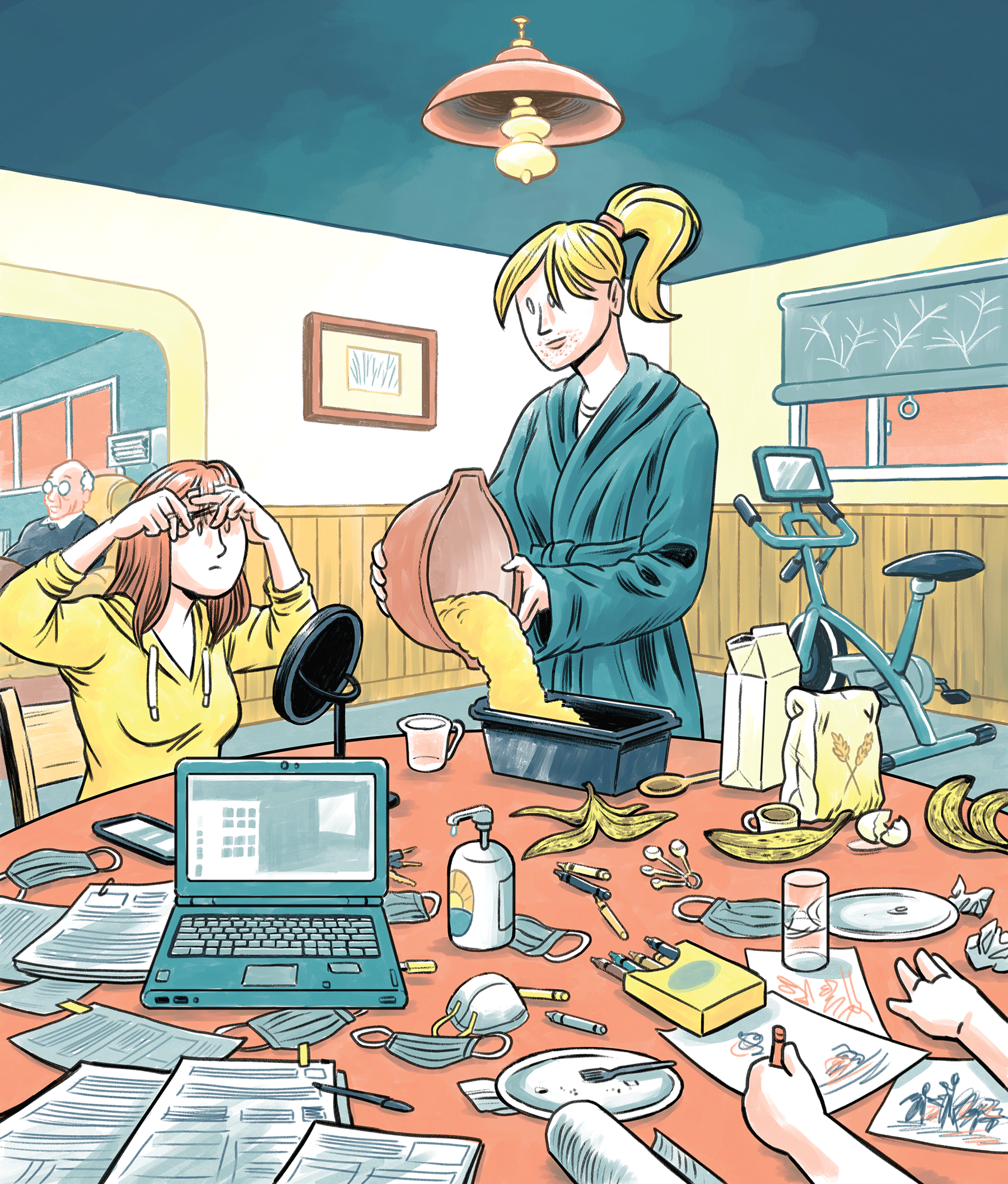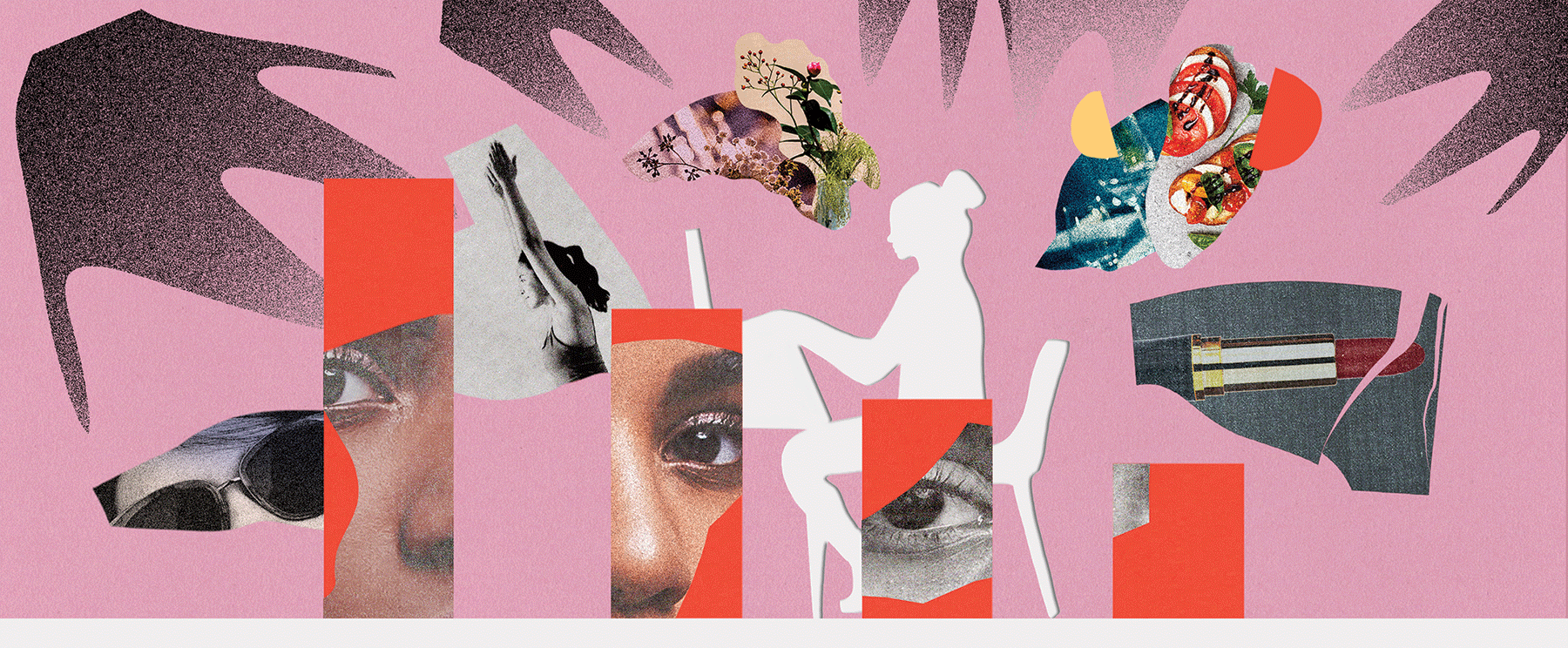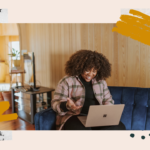Sourdough starters, maskne remedies, dalgona coffee, and home gardens.
When the pandemic forced our lives into lockdown in March 2020, the daily routines of many became complicated, taxing, and stressful. Previously pleasant occasions like dinner and a movie morphed into online ordeals requiring entirely new etiquette, and even the simplest destinations—the grocery store, the gym, for a while—turned into onerous excursions requiring personal protective equipment and arrows on the floor. The past year has been confusing, uncertain, at times frightening, even tragic. Our day-to-day modifications may seem small in the grand scheme, but it’s the little things that make our lives special. Without them, it’s easy to feel frantic.
The pandemic’s jarring disruption of reality has been difficult to navigate and challenging to cover journalistically. Lifestyle journalists were among the first to find answers to important questions surrounding how we live, well ahead of those on other beats, in some cases even ahead of public health officials. Conundrums such as how to safely grocery shop, how to bake banana bread, how to date with bars and restaurants closed, how to stay active with gym memberships paused, how to manage mental health, and how to cure the dreaded “maskne” initially felt like frivolous concerns. But reviews of face masks and hand sanitizers were not presented as casual fare to browse between “serious” feature articles. In the context of COVID, lifestyle editors knew these were life-saving health measures needed to get through the pandemic safely.
By taking an honest look at their audience’s new socially distanced realities, Canadian fashion and beauty publications have become beacons of coping strategies and practical guidance, offering steadiness when so many feel unmoored. The climbing case numbers and casualties are reported by the news. The government’s response is debated in the opinion section. Lifestyle journalism’s role has been to tell people how to keep going amid the chaos.
Here’s how five Canadian lifestyle publications have covered these pandemic times:
Chatelaine
Part of Chatelaine’s approach has been to share different household experiences, allowing readers to find common ground with the pandemic realities of others. In “5 Women on What Their Kitchen Tables Say about Pandemic Life,” by Brianna Sharpe, a kitchen table was contextualized as an important place where families gather, and not just during meals. Seeing their tables covered in drawings, crayons, laptops, and plates helped families remember that even dark days have bright moments, and that life would continue to go on, albeit indoors. The kitchen table was not just a place to plunk down and eat, but a symbol of love and togetherness.
In “Why More Families Are Moving in with the Grandparents,” Sadiya Dendar explored how the pandemic inspired a rethink of household dynamics. Dendar’s piece told the story of families who shifted to multi-generational homes as a solution to financial issues, contesting the Western taboo of living with one’s parents, and encouraging us to think about how family members can support one another.
“Having a network of writers from an incredibly broad range of backgrounds helps ensure that you’re hearing stories you may not hear about in your own bubble,” says Chatelaine editor-in-chief Maureen Halushak. “It’s really about working with writers who can bring first-hand experiences to those issues.” Halushak adds that the magazine’s COVID content strategy was to demystify the information: “I think we just acknowledged that everyone is struggling right now.”
Halushak emphasizes the importance of science-based research. “Our readers want to know how COVID is going to affect their lives, and they want reliable information,” she says. Alongside toilet paper, hand sanitizer was the number-one item on most pandemic essentials lists. Chatelaine’s article “What to Watch out for When Buying Hand Sanitizer,” by Rebecca Gao, offered a fact-based guide for readers who hadn’t yet begun Googling ingredients. Gao’s piece provided practical information about which chemicals to avoid (methanol) and what consumers need to be protected (60 to 95 percent alcohol).
Flare
Flare’s editors showed commitment to helping their readers feel capable throughout the pandemic. Prior to the transition to the Canada Recovery Benefit, the Canada Emergency Response Benefit financially supported Canadians who lost their jobs or work because of COVID. Madelyn Chung’s article “Everything You Need to Know about the Benefits Replacing CERB,” was a helpful one-stop CERB shop, providing knowledge about how to figure out the application process. Saving readers from the laborious task of navigating government websites on their own, Flare summarized the details in one place. When new information was presented, politicians and government officials used a lot of jargon. But Chung’s piece simplified and delivered what readers needed to know. The publication also ran explainer articles on vaccines and rules regarding travel. “What we’re trying to do is make a lot of more dense topics just generally accessible to readers,” says Katherine Singh, an assistant editor at Flare at the time of this interview. “I try to think about the questions I’d like addressed or things I want to know about a particular topic.”
Singh says that at the beginning of the pandemic, Flare’s site traffic indicated a “hunger” for hard data about COVID. “We were seeing our traffic decrease on our regular articles—it’s only natural that people didn’t really want to read up on Justin Bieber and things like that. They were nervous and scared about what was going on, so we really had to think of ways to adapt our content.” As readers became fatigued, they wanted more nuanced stories about the pandemic, not just facts and numbers. “It’s a scary time, and we want people to be as informed as possible, but you also don’t want to leave people erratic and freaked out all the time.”
Refinery29 Canada
Clarity is a trait that readers have come to value more than ever over the past year, and Refinery29 Canada seems to know that. Its content bridged the knowledge gap between health officials and the public, disseminating essential information to readers who were concerned and overwhelmed. In “Yes, You Need a 3-Layer Mask Now. Here’s Why & Where to Find Them,” Courtney Shea explained the proper way to wear a face mask, and emphasized the importance of masks having three layers of protection against infectious droplets. Shea used relatable language to translate medical details that readers may have found confusing. To keep things crafty (and help readers kill some time), the same article linked to a sustainable and inexpensive DIY project that showed how to add an additional layer to masks. (For the less DIY-inclined, the piece also noted inexpensive and locally sourced face masks from makers based in Toronto and Edmonton.)
“Should we be wearing masks? When should we be wearing masks? There’s been so much confusion, and it hasn’t helped that the federal government says something and the city says something else,” says Refinery29 Canada’s Toronto-based editor-in-chief Carley Fortune. “We responded to that by thinking about the questions that the news brings up for our readers.” The editors have a saying, says Fortune: “We provide the tools, not the rules,” meaning that “we have to understand that not everybody is at the same place.”
“What resonated early on to our readers was our practical content, stuff like how to give yourself a haircut, the stay-at-home emergency bang trim”
Importantly, Refinery29 Canada also confronted the pandemic’s heightened toll on racialized individuals and did not shy away from looking at how the global health crisis intersected with racism. “In the middle of a global pandemic, when almost everything about our way of life has changed, one thing has prevailed: Black trauma,” wrote senior editor Kathleen Newman-Bremang in May 2020. “Turns out you can’t put on a mask to prevent the spread of white supremacy!”
The Kit
Home workouts were one of the first pivots of the pandemic, but many didn’t know where to start. That’s where The Kit’s beauty director, Katherine Lalancette, came in. With “The Best At-Home Fitness Equipment for Every Workout,” Lalancette shared gym equipment that could help readers break a sweat and relieve COVID-induced tension without leaving the house. Lalancette’s positive tone and outlook were encouraging, and her piece considered factors such as convenience, time, and comfort level. Covering everything from affordable colourful kettlebells and ankle weights to heavier home equipment, the piece pushed readers to reach for their sweat towels. “What resonated early on was our practical content, stuff like how to give yourself a haircut, the stay-at-home emergency bang trim,” says The Kit’s style editor, Liz Gruber. “We’ve never been a hard-news website. So when the pandemic hit, it was all about how to adapt our content to still feel like us.”
During the nerve-wracking first lockdown phase, The Kit published candid perspectives submitted by readers and anonymous contributors. “Life After COVID: Do You Want Everything to Go Back to How It Was Before?” amplified two opposing viewpoints about the future. The first woman saw the pandemic as a reset button. It gave her more time for personal projects, family bonding, and self-care. The second had a completely different experience, noting that COVID added stress and anxiety to her life. By sharing the opposite takes of these two, readers got a glimpse into how COVID impacts all of us differently.
With “400 Kit Readers Get Real about Quarantine Life,” The Kit’s editor-in-chief, Laura deCarufel, brought readers together by sharing experiences they’d had while apart. Reader submissions revealed a propensity for “Zoom voyeurism” during virtual work meetings and an uptick in weekday pajamas, with 28 percent of survey respondents admitting to not getting dressed. The survey also asked readers what they’ve learned from all this time at home. Answers such as “I will respect the jobs of people I never thought twice about before” and “I will fight for a more just society” showed important introspection. Says Gruber, “For us, it’s about being relatable and easing people’s anxieties by making them feel like their anxieties are valid.”
Fashion
Fashion magazine took an interest in how people coped with the pandemic in their own unique ways. In its “Self-Isolation Diary” series, various public figures pulled back the curtain and let readers in on their day-to-day. In one late-June entry, actress Amanda Brugel opened up about home schooling, parenting, and systemic racism in Canada, among other more granular notes—at 6:30 a.m. she woke up smooshed against her six-year-old son’s wet mouth. At 7 p.m. the family took a much-needed walk around the neighbourhood. These details made readers feel as if they were spending the day with her, during a time when no one was spending much time with anyone. “We really wanted our audience to feel like they weren’t alone, which many people were feeling,” says Fashion editor-in-chief Bernadette Morra.
Odessa Paloma Parker’s story “Does Street Style Have a Future in a Post-COVID-19 World?” explored how the pandemic forced the fashion industry to rethink design and production. Before the pandemic, people were expected to conform to popular style conventions. The pandemic drove street style back to its original incarnation: what people wear because they want to.
“Fashion news comes from a very high level,” says Morra. “It would be the runways of Paris and Milan and London and New York. It would be the red carpets. It would be film premieres and what the stars are wearing. And most of that has gone away. So the place where many fashion publications are getting their information from has really diminished. The shift has gone to what I call ‘bottom-up storytelling.’”
Ahead of the colder months, Pahull Bains addressed the mental health consequences of isolation, with “How to Handle the Mental Stress of a Winter Lockdown.” The shorter days and frigid temperatures already tend to put people in a negative space, this year even more so. Dr. Judith Andersen, a psychologist and professor at the University of Toronto’s department of psychology, discussed how and why the winter lockdown was going to be different from the first one. Fashion took a solution-based approach by suggesting tips to manage mental stress without financial burden—fresh air, deep breaths, cutting down on social media use, and creating a comforting home environment. “I think one of the really important points for a media entity is you have to be responsive and you have to understand where your audience’s heads are at,” says Morra. “That’s number one.”



